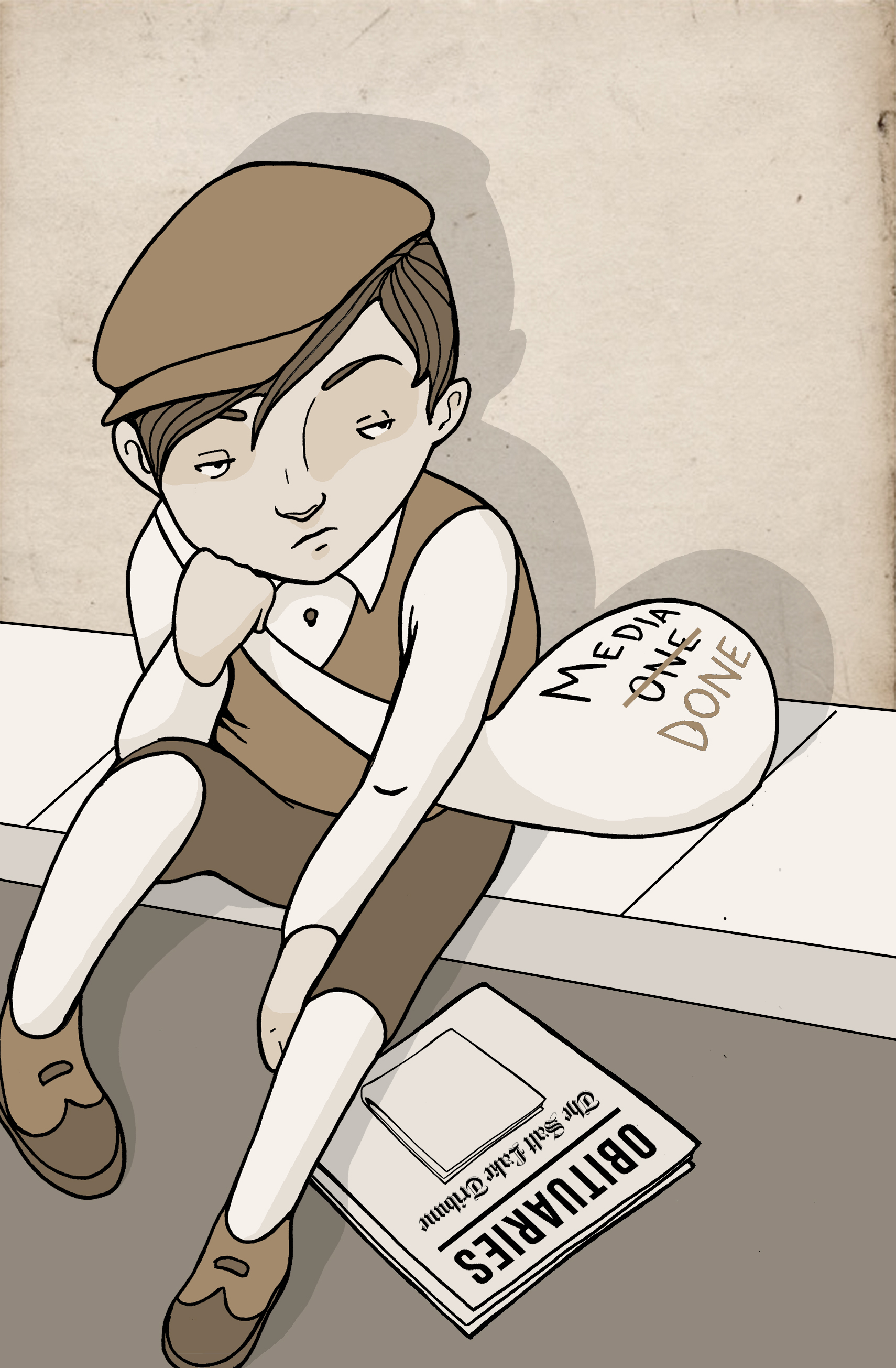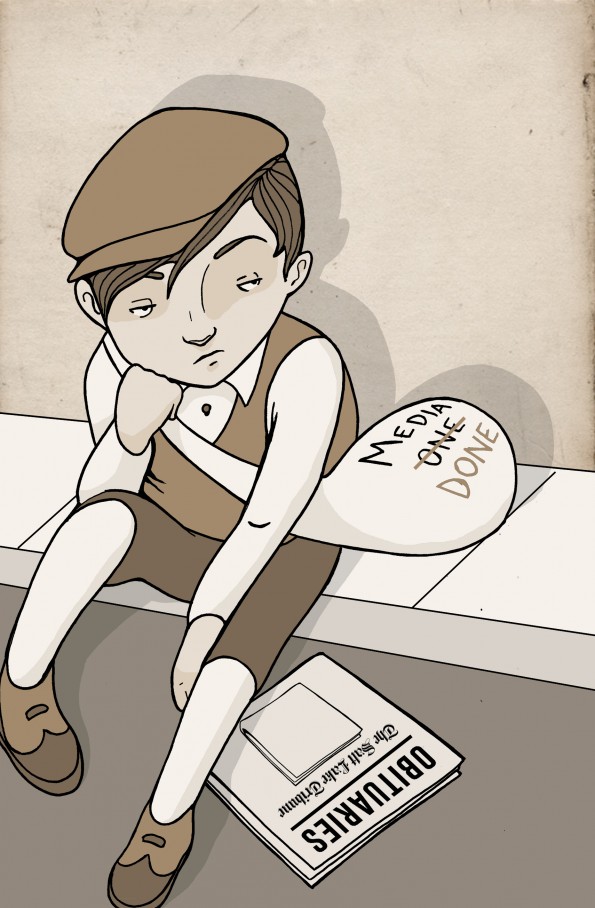
Every day, newspapers run the obituaries of people who have died in the community. But will The Salt Lake Tribune soon be running an obituary about itself?
That’s the fear many people have since the newspaper entered into a troubling and, until recently, secret agreement with its competitor, the Deseret News, which is owned by the LDS Church.
The agreement slashes the Salt Lake Tribune’s operating capital and profits in half. This deal was made not because the Tribune was suffering under a debt burden it couldn’t sustain, but simply because its parent company, Alden Global Capital (AGC), chose to sell its assets for cash. The new deal leaves the Tribune with half the operating capital—just 30% for the Tribune and 70% for the Deseret News.
Why would the Tribune voluntarily enter into an agreement to cut its revenues? To understand that, one must understand the workings of a hedge fund. Alden Global Capital is such a creature. Hedge funds operate to save companies from complete bank liquidation, but they “hedge” their risky investments by selling valuable assets of some companies—like the Tribune—to make up for the deficiencies of other companies. They then shutter or put into bankruptcy protection the worst companies in the bunch. (AGC owns many media companies, including another newspaper in Utah, Park City’s Park Record.)
The problem the Tribune is now suffering has its roots from six decades ago when it formed a joint operating agreement (JOA) with its main rival and competitor the Deseret News, which now owns the press they print on exclusively.
The Salt Lake Tribune has always been a left-leaning counterweight to the conservative Mormon-church-owned Deseret News. The Tribune scrutinizes the church’s policies and affairs, but it also closely examines how business and politics interact in nefarious ways.
Had Tribune reporter Robert Gehrke not intrepidly investigated John Swallow and his dealings with con artist techtreprenur Jeremy Johnson, Swallow would likely still be our corrupt Attorney General. Tribune reporters Tom Harvey, Brooke Adams, Paul Rolly and others all still do meaningful reporting of issues that affect life in Salt Lake. The Tribune offers a service we need in Utah—examination and scrutiny of corporate, religious and political powers. There are no built-in monitoring agencies in free-market capitalism doing this other than the media, and it’s an important role. Neither the Department of Justice nor any government entity is a replacement for a free and independent press.
Examining the Tribune’s 147-year history, one of its most shrewd business decisions was forming the Newspaper Agency Corporation (NAC) In 1952. NAC created a partnership for printing, circulation, and advertising operations under the Newspaper Preservation Act. Had this deal not occurred, the Deseret News would likely have failed when its circulation was dwindling, ad revenue was drying up, and printing costs were escalating.
Sixty-six years ago, the key for two competitors to form an effective JOA was for both papers to have an advertising revenue split based on circulation, with the lion’s share going to the more successful and dominant Salt Lake Tribune. The profit split was 58% to the Tribune and 42% to the Deseret News.
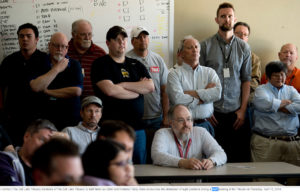
From left, sitting: Rick Egan, Sean Means.
To print hundreds of thousand of copies of a newspaper in a few hours, presses operate at a dizzying speed and are housed in buildings as large as a football field. They require a team of skilled workers. Joining forces, both papers greatly benefited: their economy of scale improved as did their profit margins.
The Trib’s publisher, John Gallivan, renewed the JOA agreement in 1982. Then as Newspaper Agency Corporation expanded into other media it began doing business as Media One. As of October 2014, the Salt Lake Tribune’s decades-old JOA with the Deseret News is for all intents and purposes dead, unless the Department of Justice puts a stop to the deal.
Even though for decades the Tribune was the largest source of news in Utah (its circulation was larger than the viewership of the biggest TV station, KSL) few people knew who owned it. It was founded in 1871 by Mormon dissidents, then purchased in 1901 by David Keith and Thomas Kearns, the Catholic U.S. Senator from Utah. Over the years the newspaper moderated its outright anti-Mormon tone but yet remained a counterbalance to the Mormon-owned Deseret News. By 1997 the Keith and Kearns families had grown so numerous and scattered that many no longer had any interest in Utah, nor in owning a newspaper here. In 1997 a large interest of the paper was sold to TeleCommunications, Incorporated (TCI) a cable company. In 1999, TCI was purchased by AT&T, the telephone monopoly. In 2002, AT&T sold the Tribune to MediaNews, a large newspaper chain owned by Dean Singleton. Among its nearly 150 newspapers, MediaNews owned the Denver Post. Singleton made too many risky investments and was forced to sell the Tribune to Alden Global Capital, its current owner.
AGC and Digital First Media tried to keep the deal with the Deseret News on the down-low. Certainly the higher-ups at the Deseret News knew what was happening. Certainly they had the means of informing the public of such an important business transaction, but their presses publish far less meaningful local news these days.
The DNews has yet to publish an article on the deal, but the DNews CEO Clark Gilbert has made a statement that the Tribune should essentially feel glad that it is printing the paper rent-free. Not exactly. When 70% of the ad revenue is going to the Deseret News, this is hardly an act of benevolence. This set of unfortunate circumstances sounds remarkably similar to the incredibly tough deal the Rocky Mountain News found itself in, with a lopsided joint operating agreement it entered into with its rival the Denver Post.
The Similarities Between the Salt Lake Tribune’s Position with the Rocky Mountain News’ Position Before They Closed
“The Rocky,” as readers called it, was Denver’s oldest newspaper and held a dominant position in subscriptions. It entered into a JOA with its competitor The Denver Post in 2001, when both papers had been suffering for years in the red, because Rocky’s debt burden was greater; part of the agreement stipulated that the Rocky owed $60 million to the Denver Post. But Rocky’s subscription numbers continued to decline. Even with 200,000 subscribers and recent Pulitzer Prizes for coverage of the Columbine High School shooting, it was unable to find a buyer. According to the Wall Street Journal, “Rocky would have entered the market without a printing press, advertiser lists or distribution capabilities….”Media News created a situation that it was virtually impossible for anybody to put together a serious offer,” a person familiar with the negotiations said. Due to its imbalanced JOA with the Denver Post, no buyer was found for the paper. The Rocky published its final issue in February, 2009. The Rocky was just eight months shy of its 150th birthday. Dean Singleton, who owned the Denver Post at the time, might have seen this as a victory, but the perceived win for Singleton and the Post didn’t prevent Singleton’s company, Media News Corp., from acquiring massive amounts of debt, which made it necessary for Media News to be bought out by AGC.
The Attempt by Deseret News and AGC to Keep the Deal of Selling the Tribune’s Assets Private
In the case of The Salt Lake Tribune, it was never Digital First’s intention to reveal to the Tribune staff nor to the public that its assets were being sold. Tribune editor and publisher, Terry Orme, and the Trib’s staff had to learn that their stake in Media One had been sold and their profits reduced by half from an anonymous tipster. They knew that a deal this large would need to be submitted to the Department of Justice for approval.
“We realized this was a newsworthy story,“ Orme told Utah Stories, “so we asked to receive a copy of the deal. The DOJ responded in just 48 hours.” They then learned that the Tribune’s assets were being cashed out and sold to the Deseret News. Nobody told them; they ended up breaking the story on themselves. The headline on April 9, 2014 read, “Feds Scrutinize Salt Lake Newspapers Deal.”
It’s clear that a CEO with the best long-term interests of a business at heart is not going to sell the part of the business that is generating the most cash flow. More than half of the Trib’s profits come from the printed paper. Now, Terry Orme says, “I don’t think that the investor ever imagined this as a long-term investment…If it were up to me, I would like to see local ownership.” But the clear problem is that from now on it will be twice as difficult for the Tribune to operate out of the red because its operating capital was slashed in half. And like the Rocky Mountain News, its only assets now are its brand, intellectual property and staff.
It’s clear that a CEO with the best long-term interests of a business at heart is not going to sell the part of the business that is generating the most cash flow.
Maybe Jeff Bezos, Amazon CEO who just bought the Washington Post, or Warren Buffet, who just bought about a dozen small local daily newspapers, would like to buy the Tribune. Despite the actions of Digital First Media, AGC controlled, it turns out that print is not dead. Or at least the news of print’s death has been slightly exaggerated. Readers still mostly prefer a print newspaper to an app. They still prefer print to web reading. Print news doesn’t require an operating system; it’s not dependent upon download speeds; there are no annoying pop-up ads that fly in a readers face as they are trying to read an interesting article. The Wall Street Journal has been growing and lately so has The New York Times. The Washington Post has just announced it is making another three dozen hires in the coming months, adding to its 600-person staff newsroom. All of these hires are meant to boost local coverage, add blogs and drive online readership.
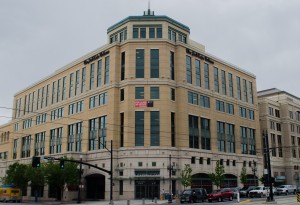
The major push for a digital initiative of the Tribune’s owner, Digital First, has proven a failure. Its attempts to centralize national content through a project called Thunderdome has been closed, with 52 employees laid off. But Terry Orme says this really comes at no real loss to the Tribune because the digital platform gained no traction with readers. Still, the billionaire investors are not selling the assets of their print; they are bolstering their local coverage through online initiatives.
The ridiculous explanation by Digital First CEO, John Paton, is that they are “shedding legacy costs.” If they really believe that shedding more than half of its revenue stream is a “legacy cost,” then AGC needs an accountant to tell Paton to examine a basic balance sheet.
Could this move by the Deseret News and its owners, the LDS Church, be an attempt to silence the church’s strongest judge? The Tribune is a harsh critic of how the church influences Utah liquor laws and the ban on same-sex marriage. The Tribune is also a referee when there are instances of the church crossing the line of constitutional separations of church and state, like the LDS Church purchase of an entire block of downtown Salt Lake City’s Main Street and attempt to suppress free speech there. Perhaps the Church couldn’t resist such a great deal.
The buyout by the Deseret News of The Salt Lake Tribune might look good to Deseret Management because its slice of the ad revenue pie through Media One will double. But the Deseret News is losing its reputation as a local paper interested in in-depth coverage of local matters. Its editorial and marketing push has been to become a national Mormon newspaper. Its Sunday subscriptions have doubled over the past three years, but its daily subscriptions have remained lower than those of Salt Lake Tribune.
In 2001, the Deseret News moved into the Triad Center in an effort to cut costs and consolidate news gathering operations among other Mormon-church-owned media—KSL TV and KSL Radio. Since then, the Deseret News has had fewer exclusive local newspaper stories and more shared superficial local content. The day this reporter canceled his DNews subscription was when it was clear that TV news and radio stories were being repurposed for the DNews. It’s unlikely that if the Tribune is gone, local advertisers will continue their contracts exclusively with the Deseret News. While it might look great on paper in terms of short-term revenue, this deal is a loser for both papers and residents because it means a big decline in meaningful local coverage and a balance of the powers that require press scrutiny.
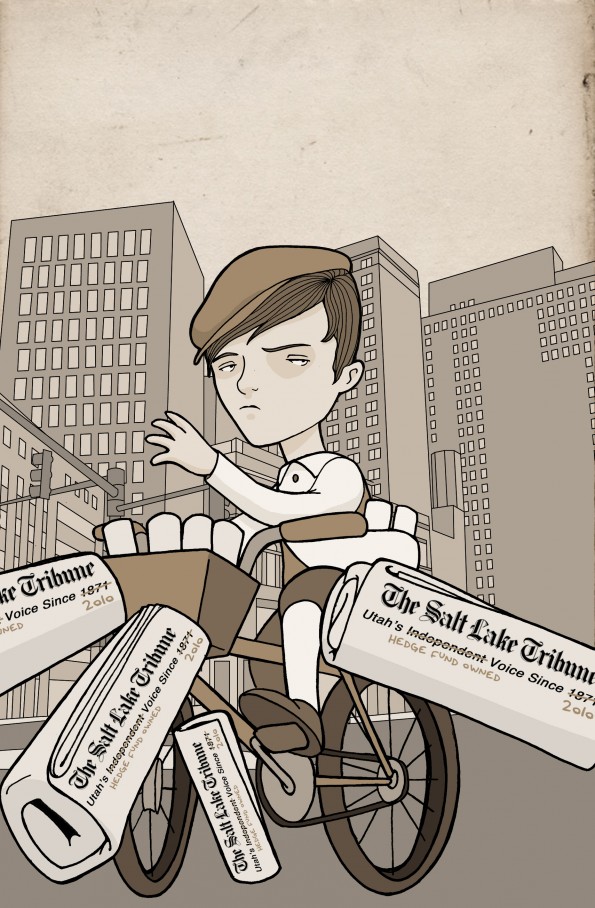
At their best, newspapers function as an equalizer in the power struggle between behemoth corporate entities and local entrepreneurs who create meaningful, good jobs and wealth. Corporations make every attempt to buy their way into local markets and monopolize the buying public by influencing local politicians. Local newspapers, with reporters who do good work, scrutinize politicians, and power brokers and sometimes find flaws, corruption and collusion. The problem is that if all newspapers are owned by corporate conglomerates, this scrutiny, investigation and “muckraking” all happen on a much smaller scale or not at all. If the DOJ approves the deal, the Tribune will likely die, but in reality its control died when the Kearns family sold their interest in the paper to a newspaper conglomerate. They, in essence, saddled the future of the company to the entities that are actively causing harm through their greedy power plays.
The Salt Lake Tribune’s future rests completely in the hands of the Department of Justice now. A local group of concerned citizens formed the Utah Newspaper Project to spearhead an effort to object to the Tribune’s new deal. Its website, savethetribune.com, features petitions people can send to the Department of Justice saying that the deal is designed to fatally cripple the paper by preventing it from finding a long-term buyer—a sad end to the 147-year tradition of Utah’s second oldest newspaper. §

